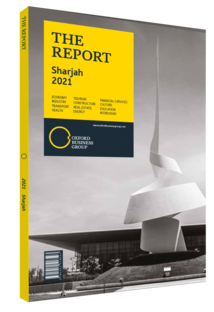The pandemic sparks Gulf economic diversification efforts
While many Gulf nations were already working to diversify their economies prior to the Covid-19 pandemic, the global recession in 2020 prompted governments in the region to either reassess or accelerate their strategic plans. With economies around the world operating under capacity and global travel severely curtailed for much of 2020, there was a significant drop in demand for – and subsequently the price of – oil, which is a major source of income for the GCC. For example, oil accounts for approximately 30% and 45% of GDP in the UAE and Saudi Arabia, respectively, and 75% of government revenue in Oman. This oil dependency partly explains why Gulf countries were projected by the IMF to collectively contract by 6.6% in 2020 – over two percentage points more than the estimated 4.4% decline for the global economy.
Alternative Revenue
The economic downturn once again highlighted the importance of generating new and sustainable streams of revenue. While most countries in the region were already engaged in some form of diversification strategy prior to 2020, the pandemic served as a reminder to press ahead with efforts. According to the IMF’s April 2021 “World Economic Outlook” database, the economies of Saudi Arabia, the UAE and Oman contracted by 4.1%, 5.9% and 6.4%, respectively, in 2020. The UAE’s government-owned Mubadala Investment Company has made a series of strategic investments in sectors such as tech, logistics and health. These include $3bn in Waymo, Alphabet’s self-driving technology arm; $700m in US start-up REEF Technology, which manages logistics hubs and neighbourhood kitchens; and $235m in German pharmaceutical company Evotec.
Meanwhile, although the downturn has seen the government reduce its budget for implementing Vision 2030 – the country’s long-term economic development plan – Saudi Arabia is continuing work to generate new sources of revenue. In May 2020 the government awarded the Public Investment Fund (PIF), the Kingdom’s sovereign wealth fund, an additional $40bn in state reserves to tap into investment opportunities. Since then, the PIF has invested in companies across various industries, including Uber, Softbank’s Vision Fund, electric carmaker Lucid Motors, Disney and Bank of America. Despite the kingdom’s long-term focus on diversification, the fund also invested more than $2bn in the hydrocarbons industry. Over the course of 2020 it acquired stakes in oil giants such as BP, Total and Shell, which were seen as cost-effective investments given the fall in share prices.
Some GCC countries have explored other methods to fund state coffers. In October 2020 Oman launched its fiscal plan for 2020-24, which aims to diversify revenue through a series of projects and tax reforms. In addition to investing OR371m ($965m) in unspecified development projects around the country, the plan outlined efforts to improve tax collection and introduce value-added tax in April 2021. For the first time, the government is also considering establishing a personal income tax targeting top earners to broaden the revenue base. In August 2020 credit ratings agency Fitch estimated that the country’s fiscal deficit would reach 20% of GDP that year, up from 8% in 2019.
New Supply Chains
In light of the disruptions to trade experienced during 2020, countries in the Gulf are also looking to diversify supply chains. The pandemic has intensified existing concerns about an over-reliance on overseas suppliers for goods and raw materials, and has encouraged many businesses and governments in the region to pursue more resilient and diversified trade links. In an example of regional cooperation, in April 2020 the GCC adopted a Kuwaiti proposal to create a joint food supply network across the bloc. Concerned by Covid-19-related disruptions to trade and fears over food insecurity, countries agreed to establish special protocols for border and Customs posts in order to facilitate the movement of basic food and medical supplies within the six-member alliance.
You have reached the limit of premium articles you can view for free.
Choose from the options below to purchase print or digital editions of our Reports. You can also purchase a website subscription giving you unlimited access to all of our Reports online for 12 months.
If you have already purchased this Report or have a website subscription, please login to continue.

